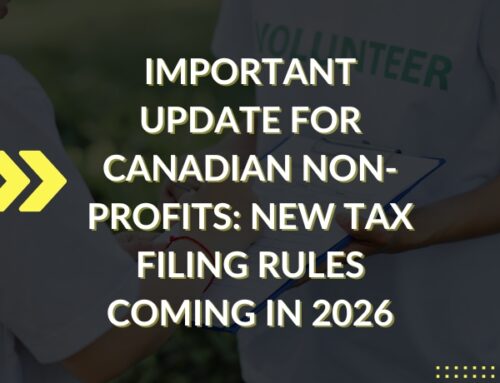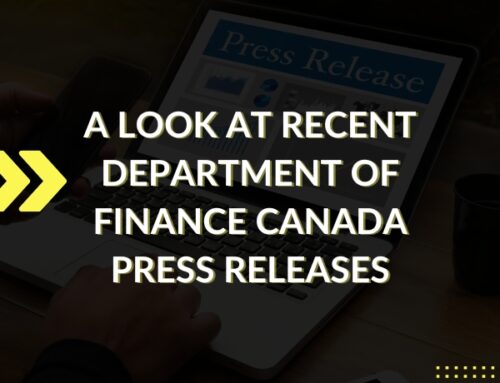Published October 20, 2023. (If you haven’t read Part 1 of this series, you can find it HERE.)
In the ever-evolving landscape of Canadian taxation, understanding the nuances of legislative changes is vital for Chartered Professional Accountants (CPAs). The recently passed Bill C-47 brings a new wave of mandatory disclosure rules, particularly concerning “reportable transactions.”
The Canada Revenue Agency (CRA) has issued guidelines to clarify this concept, with special emphasis on the hallmarks that make a transaction reportable. These hallmarks include contingent fees, confidentiality agreements, and contractual protection clauses. While these hallmarks are important, it’s equally crucial to know who within an organization is obligated to report these transactions. Let’s delve into the nitty-gritty of these guidelines, including the key aspect of reporting obligations within a firm.
Three Hallmarks of Reportable Transactions
Before diving into the reporting responsibilities, it’s essential to understand what makes a transaction reportable in the first place:
Contingent Fees: These are fees that are dependent on the outcome of a transaction. The CRA guidelines specify that if a contingent fee arrangement exists before the completion of a transaction, it triggers a reporting requirement. However, if such an arrangement is made after a transaction is completed, it usually does not necessitate a report.
Confidentiality Agreements: If an agreement mandates that the tax strategies used must be kept confidential, then the transaction is reportable. However, trade secrets unrelated to tax matters are exempt.
Contractual Protection: Clauses that protect the taxpayer or advisors in the event the CRA disallows the intended tax benefits are a hallmark of reportable transactions. However, general clauses such as limitation of liability or standard price adjustment are generally not considered triggers for reporting.
Who Has the Obligation to Report?
The CRA’s guidance provides key insights into who within an organization has the responsibility for reporting. This aspect is often overlooked but is extremely important for any firm regardless of size.
Advisors and Promoters: Those directly involved in providing advice on tax planning strategies or promoting tax benefits must report the transactions. This obligation extends to legal professionals, financial advisors, and CPAs.
Partnerships and Employers: For firms operating as partnerships or employers who receive a fee for advising on an avoidance transaction, only the entity itself typically needs to disclose the reportable transaction. The employees or partners involved in the transaction usually don’t have to file separate disclosures. This clarification is crucial for streamlining reporting processes within large CPA firms.
Individual Transactions: It’s important to note that if an individual within the organization advises on a transaction that was not disclosed in an advance income tax ruling and is subject to the reportable transaction regime, it would still need to be reported separately.
Third Parties: If an external consultant or advisor, often employed on a contingent fee basis, is involved in a transaction, they may also have reporting obligations. This is especially true if their fee arrangement was put in place before the completion of the transaction.
Practical Applications: What This Means for CPAs
CPAs often work in environments where multiple professionals contribute to a project. Understanding the chain of command for reporting obligations helps in ensuring compliance without duplication of effort.
Due Diligence: CPAs should regularly review transactions they are advising on to determine if they are reportable under the new guidelines.
Communication Channels: Firms should establish clear lines of communication for internal reporting of transactions that might be reportable, ensuring that the responsibility for filing a report with the CRA does not fall through the cracks.
Training: Given the new rules, now is a good time for in-house training sessions to educate all levels of staff on these reporting requirements.
Liability: Misreporting or failing to report carries severe penalties. As such, it’s crucial for CPAs to know not just the transactions that need to be reported but also who within the organization is responsible for doing so.
Conclusion
The landscape for tax reporting became even more complex with the introduction of Bill C-47 and its enhanced mandatory disclosure rules. Understanding who within an organization is obligated to report transactions is not just a compliance requirement but also a risk management strategy. For CPAs, this means not only advising clients with more accuracy but also fortifying their internal reporting mechanisms to adapt to these regulatory changes. Compliance is a team effort and understanding the subtleties of these new guidelines can go a long way in avoiding regulatory pitfalls.
For more information on this topic, refer to CRA’s publication Mandatory Disclosure Rules – Guidance (updated as of September 6, 2023) Also, register here for AJAG’s Income Tax Update – 2023 course with course instructor Howard Wasserman, CPA, CA, TEP which will cover recent changes in income tax legislation affecting individuals and private sector businesses.
In Part 3 we will address mandatory disclosure rules and notifiable transactions in more detail.
Disclaimer:
The information contained in this blog post is intended for general informational purposes only and should not be construed as legal, accounting, or tax advice. While every effort has been made to ensure the accuracy and reliability of the content, the author and publisher make no representations or warranties as to the completeness, accuracy, or applicability of any information provided.
Neither the author nor the publisher shall be liable for any errors or omissions in the content, or for any actions taken in reliance thereon. Readers are advised to consult the original legislation or other legal sources for complete and accurate information.






